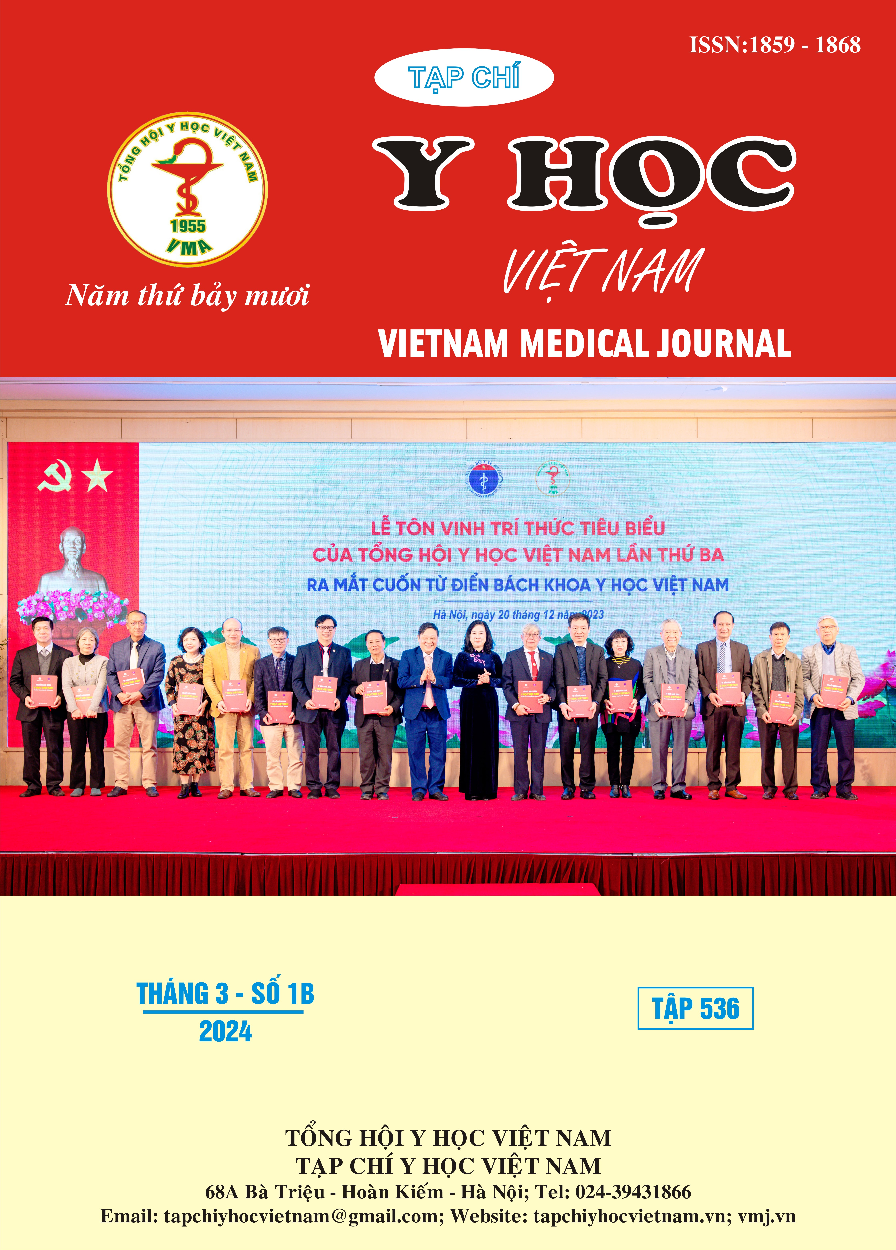ASSOCIATION BETWEEN IgE CONCENTRATION, EOSINOPHIL COUNT WITH TOXOCARA CANIS INFECTION IN CHILDREN IN HO CHI MINH CITY
Main Article Content
Abstract
Objective: Toxocara canis infection can occur in all ages, if it is not detected and treated promptly, it will mainly not go away on its own and can create a danger to human health, especially children. ELISA test to quantify specific IgG in serum is a widely used test in clinical practice to diagnose toxocariasis, however it does not distinguish between old and new infections, so some tests other have been made to be used to support in diagnosis. Our study evaluates the relationship between IgE and eosinophil levels and T.canis infection in children in Ho Chi Minh City in Vietnam. Methods: A cross-sectional study was conducted from March to April 2023 with a sample size of 986 children from 3 to 15 years old. Serum samples were collected for investigating IgE concentration, eosinophils and anti-Toxocara immunoglobulin G (IgG) by using enzyme-linked immunosorbent assay (ELISA). ELISA testing by using the American-made AccuDiag™ Toxocara IgG ELISA Kit. Values of optical density greater than 0.3 according to the serological ELISA test were considered positive. Results: The seropositivity rate for Toxocara canis in children in Ho Chi Minh City, Vietnam is 14.2%. There was a statistically significant difference in the average values of MCH, MCV, eosinophils, SGOT (AST) and IgE between the two groups of Toxocara canis ELISA positive and negative, p < 0.05. In the positive ELISA group, optical density 0,3≤ OD<0,5 prevailed. There is a positive association between IgE concentration and eosinophil count. Conclusion: The majority of children with ELISA positive for Toxocara canis in the study had antibody levels of 0.3≤ OD<0.5. There was a significant association between IgE concentration and eosinophil count. The positive association between IgE concentration and eosinophil count suggests these two parameters are valuable markers for the evaluation of the toxocariasis.
Article Details
References
2. Dattoli VCC, Freire SM, Mendonça LR, Toxocara canis infection is associated with eosinophilia and total IgE in blood donors from a large Brazilian centre, Trop Med Int Health. 2011.;16(4), pp. 514- 7.
3. Elefant G, Shimizu S, Sanchez M, et al. A serological follow-up of toxocariasis patients after chemotherapy based on the detection of IgG, IgA, and IgE antibodies by enzyme-linked immunosorbent assay. J Clin Lab Anal. 2006; 20(4):164–72.
4. Beaver PC. Larva migrans. Exp Parasitol. 1956;5:587–621.
5. Fernando S. D., Wickramasinghe W. P., Kapilananda G. M., Dewasurendra R. L., Amarasooriya J. D., Dayaratne H. G. Epidemiological aspects and risk factors of toxocariasis in a pediatric population in Sri Lanka. Southeast Asian Journal of Tropical Medicine and Public Health. 2007;38(6):983–990.
6. Roldán W. H., Espinoza Y. A., Atúncar A., Ortega E., Martinez A., Saravia M. Frequency of eosinophilia and risk factors and their association with Toxocara infection in schoolchildren during a health survey in the North of Lima, Peru. Revista do Instituto de Medicina Tropical de São Paulo. 2008;50(5):273–278. doi: 10.1590/S0036-46652008000500005
7. Wiśniewska-Ligier M, Woźniakowska-Gęsicka T, Sobolewska-Dryjańska J, et al. Analysis of the course and treatment of toxocariasis in children-a long-term observation. Parasitol Res. 2012; 110(6):2363–71.
8. Lê Đình Vĩnh Phúc. Nghiên cứu đặc điểm lâm sàng, cận lâm sàng và kết quả điều trị bằng thiabendazole trên người mắc bệnh ấu trùng giun đũa chó, mèo tại trung tâm medic thành phố hồ chí minh (2017 - 2019),2019. Luận án tiến sỹ Y học, Viện Sốt rét-Ký sinh trùng-Côn trùng trung ương.
9. Taylor M, Keane C, O’Connor P, et al. The expanded spectrum of toxocaral disease. Lancet. 1988; 1(8587):692–5.
10. Rubinsky-Elefant G, Hoshino-Shimizu S, Jacob C, et al. Potential immunological markers for diagnosis and therapeutic assessment of toxocariasis. Rev Inst Med Trop Sao Paulo. 2011;53(2):61–5.


